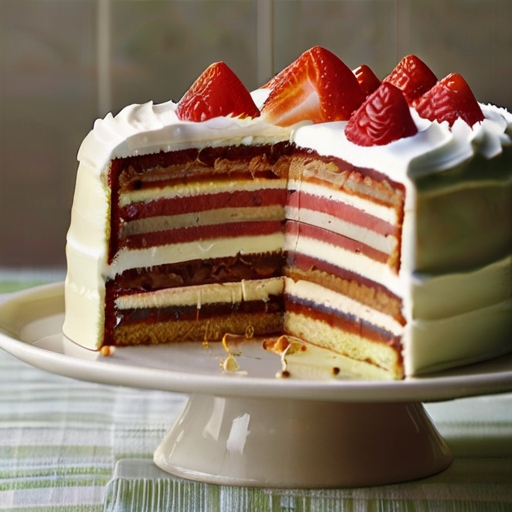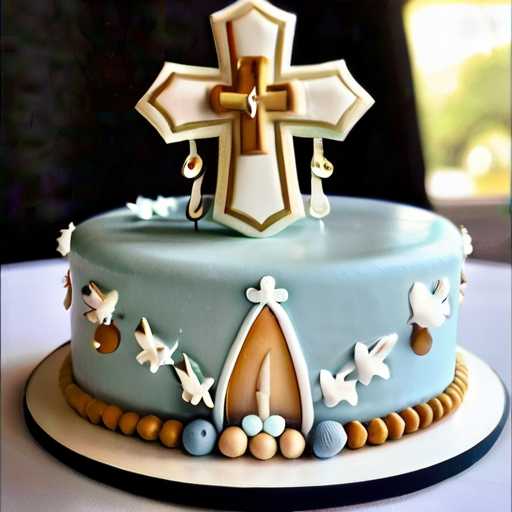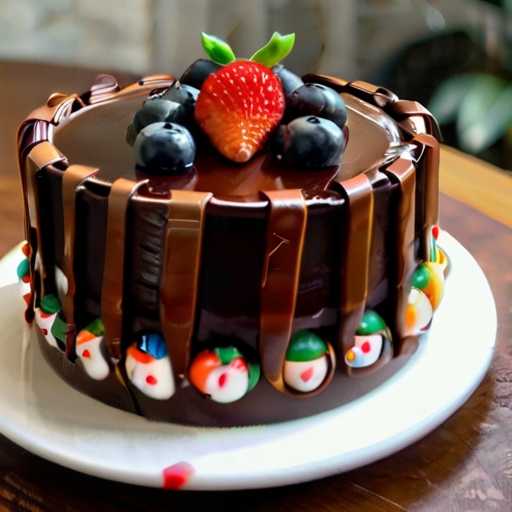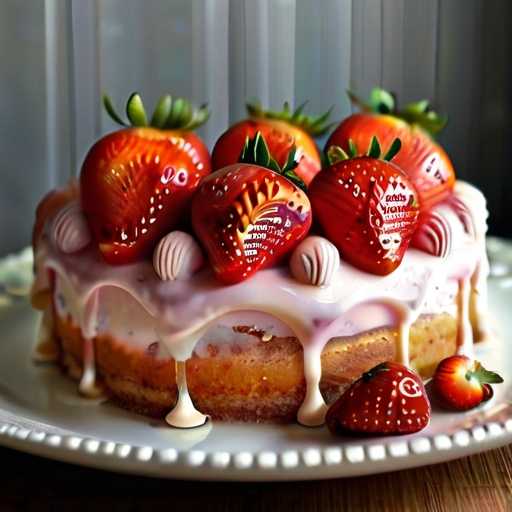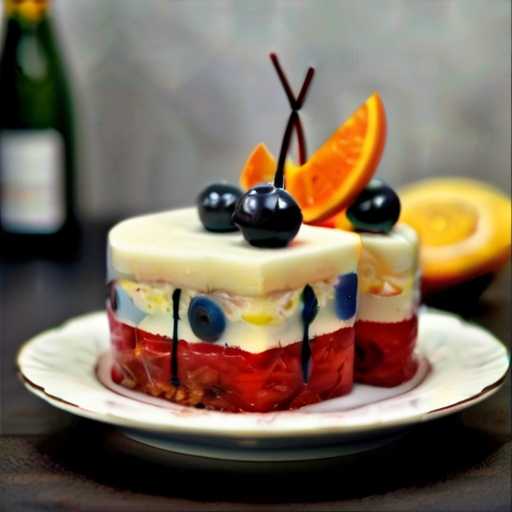Traditional Seven-Layer Cake Recipe
The Traditional Seven Layer Cake Recipe is a classic dessert that comes from a variety of cultural culinary traditions and usually consists of alternating moist cakes and creamy frosting. It consists of layers. Its popularity and importance lies in its nostalgic charm and festive nature, and it is often served on special occasions such as birthdays, weddings, and holidays. This popular confectionery has stood the test of time and symbolizes fun, tradition, and the joy of moments shared with loved ones.
Traditional Seven-Layer Cake
Cuisine
American
Difficulty
Medium
Preparation
45 minutes
Cooking
30 minutes
Traditional Seven-Layer Cake Recipe Ingredients:
- Ingredients:
- 1. 2 cups all-purpose flour
- 2. 1 cup granulated sugar
- 3. 1 cup milk
- 4. 1/2 cup softened unsalted butter
- 5. 4 eggs
- 6. 2 teaspoons baking powder
- 7. 1 teaspoon vanilla extract
- 8. Pinch of salt
- For frosting between layers:
- 1. 2 cups heavy cream
- 2. 1/2 cup powdered sugar
- 3. 1 teaspoon vanilla extract
- Optional Substitutes:
- • All Substitutions You can also use wheat flour or soft flour to make it lighter.
- • Depending on your preference, you can use a combination of white and brown sugar to get a slightly different flavor.
- • If desired, substitute melted butter for softened butter, but adjust mixing method accordingly.
- • Whole milk can be replaced with low-fat milk or plant-based milk alternatives such as almond milk or soy milk.
- • Baking powder can be replaced with an equal amount of baking soda, but adjust the acid content accordingly.
- • Vanilla extract can be replaced with a variety of flavors, such as almond extract or citrus peel.
- • Instead of making your own frosting, you can use store-bought frosting or cream cheese frosting.
Traditional Seven-Layer Cake Recipe:
- Directions:
- 1. Preheat oven to 350°F (175°C).
- 2. Grease and flour seven 9-inch round cake pans. If you don’t have seven molds, you can bake the layers in batches or reuse the cooled and cleaned molds.
- 3. Gather all ingredients and make sure they are at room temperature.
- Cake Layers:
- 1. In a large mixing bowl, cream together 1 cup unsalted butter and 2 cups granulated sugar until light and fluffy.
- 2. One by one, add the four large eggs, beating thoroughly after each addition.
- 3. Add 1 teaspoon vanilla extract and stir.
- 4. In a separate bowl, combine 3 cups all-purpose flour, 1 tablespoon baking powder, and 1/2 teaspoon salt.
- 5. Gradually add dry ingredients to creamed mixture, alternating with 1 cup of milk. Mix last, starting with the dry ingredients.
- 6. Divide the batter evenly between the prepared cake pans and spread evenly.
- 7. When a toothpick is pushed into the center of each layer, it should come out clean after 15 to 20 minutes of baking in a preheated oven.
- 8. Remove the cake layers from the oven and let cool in the pan for 5-10 minutes, then transfer to a wire rack to cool completely.
- Frosting and Assembly:
- 1. In a large mixing bowl, combine 3 cups confectioners’ sugar, 1 cup unsalted butter (softened), and 1 teaspoon vanilla extract until smooth and creamy.
- 2. Place one cake layer on a plate and spread a layer of frosting on top.
- 3. Repeat with remaining cake layers, adding frosting in between.
- 4. Once all layers are in place, spread the remaining frosting over the top and sides of the cake to create a smooth surface.
- 5. Decorate the cake with sprinkles, chocolate shavings, or other toppings, if desired.
- 6. Chill the cake in the refrigerator for at least 1 hour before cutting and serving, allowing the icing to set.
- Key points:
- • Grease and flour the cake pan well to prevent sticking.
- • To prevent frosting from melting, allow cake layers to cool completely before frosting.
- • Make sure the butter and eggs are at room temperature to ensure optimal mixing and consistency.
- • For a more decorative finish, consider piping additional frosting around the edges of the cake or placing edible flowers or fruit on top.
The traditional Seven-layer cake recipe requires the following utensils or utensils:
- Mixing bowl: Mix ingredients together.
- Electric mixer or stand mixer: Use to mix ingredients such as butter, sugar, and eggs until creamy and smooth.
- Measuring cup and spoon: For accurately measuring ingredients.
- Cake Pans: Seven cake pans of the same size are required to bake each layer individually.
- Parchment paper: Used to line cake pans and prevent sticking.
- Cooling Rack: For cooling cake layers after baking.
- Offset Spatula: Used to evenly distribute and assemble icing into each layer.
- Cake Turntable (Optional): Useful for icing and decorating cakes.
- Cake Leveling Knife or Serrated Knife: Used to level cake layers as required.
- Pastry Brush: Used to brush excess crumbs from cake layers.
- Cake stand or serving plate: For displaying finished cakes.
- Decorating tools (optional): piping bags, nozzles, decoration elements, etc. for decorating cakes.
To perfect the flavor: traditional seven-layer cake recipe
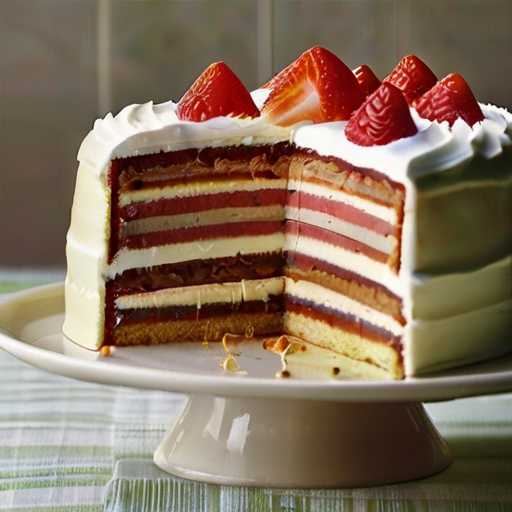
- Quality Materials: Start with quality materials. For the best flavor, use fresh eggs, real butter, pure vanilla extract, and high-quality flour and sugar.
- To properly mix, cream butter and sugar until frothy and light. Beat thoroughly after each addition of egg. Add eggs one at a time. After ensuring that the dry ingredients are equally distributed through sifting, add them to the dough little by little until barely mixed. A dense cake can be the result of overmixing.
- Flavor Layers: Each layer of the cake provides an opportunity to introduce different flavors. Consider adding extracts, zest, or spices in different layers to add depth and complexity to the overall flavor profile.
- Icing Flavor: Icing greatly affects the overall flavor of the cake. Choose a frosting that complements the flavors of your cake layers. For example, rich chocolate icing pairs well with vanilla or almond-flavored cakes.
- Filling Options: Traditional seven-layer cakes often include different fillings between the layers, such as fruit jam, pastry cream, or ganache. Choose fillings that enhance the flavor of your cake layers and frosting.
- Soaking Syrup: To add moisture and flavor to the cake layers, brush the cake with dipping syrup before assembling. The syrup can be flavored with extracts, liqueurs, or fruit juices that enhance the flavor of the cake.
- Decorative Garnishes: Garnishes not only enhance the appearance of the cake but also contribute to its taste. Consider topping your cake with fresh fruit, chocolate shavings, toasted nuts, or edible flowers to enhance the cake’s flavor.
- Let the flavors meld: Once the cake is assembled, let it rest for several hours or overnight before serving. This allows the flavors to meld and creates a more cohesive and flavorful cake.
Traditional seven-layer cake recipe. Here are some serving tips:

- Plating and Serving:
- Start by placing the 7-layer cake on a decorative cake stand or serving plate to reveal the dramatic layers.
- Use a sharp knife to cut pieces from the cake, ensuring each piece captures all seven of its layers for maximum visual appeal.
- Place each slice on a separate dessert plate for an elegant presentation.
- Garnish:
- For an elegant touch, sprinkle the top of each slice with powdered sugar or cocoa powder.
- Serve with lots of whipped cream or vanilla ice cream to create a creamy contrast to the richness of the cake.
- For a pop of color and a hint of fruity flavor, garnish with fresh berries such as strawberries, raspberries, or blueberries.
- Sides:
- Pair Deven-Layer Cake with hot coffee or espresso to balance its sweetness with rich, bold flavor.
- Enjoy with cold milk or creamy latte.
- For a more decadent touch, serve a dessert wine such as Spätlese Riesling or sweet Moscato to complement the flavor of the cake.
Storage and Leftover: For traditional Seven-layer cake recipes

- Cooling: Before storing the rest of the 7-layer cake, make sure it has completely cooled to room temperature. This prevents condensation and stickiness.
- Storage: Once cool, wrap remaining cake tightly in plastic wrap or aluminum foil. Alternatively, you can place the cake pieces in an airtight container. This will prevent the cake from drying out and prevent odors from transferring to the refrigerator.
- Refrigerate: Store wrapped or packaged cake pieces in the refrigerator. The low temperature preserves freshness and extends the shelf life of the cake.
- Reheating (if applicable): If you would like to enjoy leftover cake warm, you can reheat individual cakes in the microwave or oven. Here’s how:
- Microwave: Place 1 cake in a microwave-safe dish and heat in 10-15 second intervals until desired temperature is reached. Be careful not to overcook the cake as it may become dry.
- Oven: Preheat oven to low (approximately 250°F or 120°C). Wrap the cake slices in aluminum foil to prevent drying and place on a baking sheet. Heat the cake in the oven until warmed through, 10 to 15 minutes.
- To serve: After reheating, remove the cake from the microwave or oven and allow to cool slightly before serving. You can enjoy the leftover warm cake as is or serve it with ice cream or whipped cream for a delicious dessert.
Nutritional Values for Traditional Seven-Layer Cake Recipe (Per Serving):
- Calories: Approximately 350-400 calories per slice
- Fat: Approximately 15-20 grams per slice
- Protein: Typically 4-6 grams per slice
- Carbohydrates: Approximately 45-60 grams per Slice
- Fiber: Typically 1-3 grams per Slice
- Note that these values may vary depending on the specific ingredients used in the recipe and serving size please.
Health benefits: Traditional seven-layer cake recipes
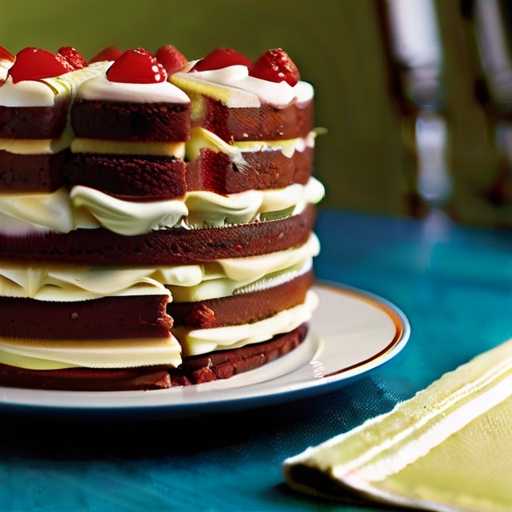
- Mental Health: Providing comfort and satisfaction while enjoying a slice of 7-layer cake can contribute to your mental well-being. Taking care of yourself every once in a while can lift your mood and bring you joy.
- Social Connections: Bake a traditional 7-layer cake recipe and share it with friends and family to promote social connections and strengthen relationships. This is essential for overall well-being.
- Moderation: Learning to enjoy foods like 7-layer cake in moderation is an important aspect of a balanced diet. Eating occasional snacks can help prevent feelings of deprivation and promote a healthy relationship with food.
- Celebrations: Traditional seven-layer cakes are often associated with celebrations and special occasions. Participating in these celebrations can contribute to your spiritual well-being and create precious memories.
- Creativity: Bake a 7-layer cake from scratch to encourage creativity in the kitchen. Experimenting with different flavors and decorations is a fun and rewarding experience.
DIY vs. Professional Bakery: Traditional Seven-Layer Cake Recipe
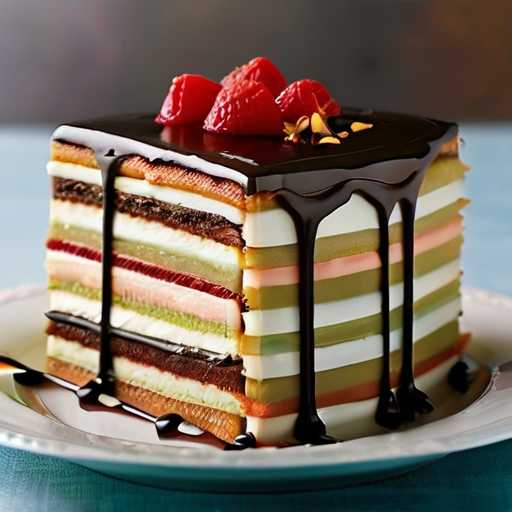
DIY:
- Pros:
- Cost-Effectiveness: Making a traditional 7-layer cake at home can be more budget-friendly there is. There are labor and overhead costs associated with a professional bakery.
- Customization: DIY allows for complete customization according to your personal preferences, including: B. Adjust cake taste, texture, and decoration to personal taste.
- Ingredient Control: Control the quality and origin of your ingredients, ensuring you use organic or premium ingredients when needed.
- Learning Experience: Doing baking at home provides a valuable learning experience where you can improve your baking skills and enjoy creating masterpieces from scratch.
- Cons:
- Time-consuming: Baking a 7-layer cake from scratch requires a lot of time and effort, including preparation, baking, assembly, and decoration.
- Skill Level Required: Achieving the perfect texture and appearance of each layer can be difficult, especially for novice bakers, and may require practice and patience.
- Equipment Required: Special equipment may be required, such as cake pans, food processors, and decorating tools. If you don’t already own these, your initial investment may increase.
- Risk of Errors: When baking at home, there is a high risk of errors and accidents that can lead to a defective final product.
- Budget Considerations:
- Materials: Buy materials in bulk or choose generic brands to reduce costs.
- Equipment: If your budget is tight, consider renting or purchasing used equipment.
- Decorating: DIY decorating is more affordable than purchasing ready-made decorations or hiring a professional decorator.
- Scale: Adjust recipes to required quantities to avoid unnecessary costs.
Professional Bakery:
- Pros:
- Convenience: Ordering from a professional bakery saves you time and effort as you don’t have to spend hours baking and decorating your own cakes.
- Expertise: Professional bakers have the skills and experience to consistently produce high-quality cakes with precise flavor, texture, and decoration.
- Variety: Professional bakeries often offer a wide range of cake flavors, fillings, and designs, allowing for greater choice and customization.
- Presentation: Professional cakes are usually presented by professionals with perfect decoration and attention to detail.
- Cons:
- Cost: Professional cakes can be significantly more expensive than DIY cakes, especially when considering labor, overhead, and profit margins.
- Limited Customization Options: Professional bakeries offer some customization options, but may not be able to accommodate all personal preferences and dietary restrictions.
- Quality Control: Bakeries may vary in the quality and freshness of the ingredients used.
- Scheduling: Ordering from bakeries requires advance planning and may be subject to stock availability, especially during peak seasons and holidays.
- Budget Considerations:
- Price Comparison: Compare prices and products from different bakeries to find the best price to suit your budget.
- Serving Size: Decide on the right size of the cake depending on the number of people and avoid spending too much money on too many people.
- Special Offers: Find special bakery promotions, discounts and packages to save money.
- DIY Addition: Consider DIY decorations and embellishments to customize your cake while still having the convenience of a professional bakery.
Budget-Friendly Options: Traditional Seven-Layer Cake
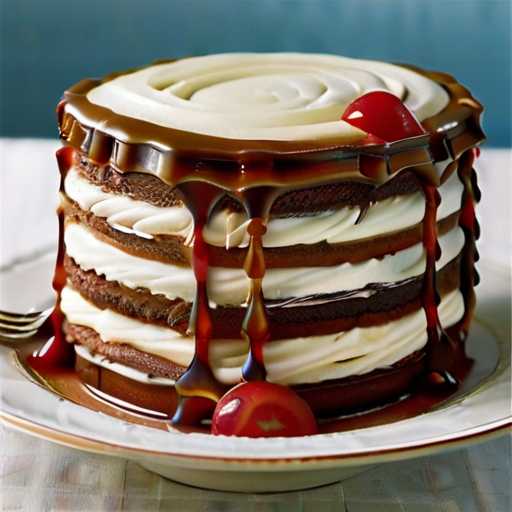
- Affordable Decorating Ideas:
- Use basic ingredients from the cake recipe itself as decorations. For example, sprinkle extra cake flour or chopped nuts on the cake to add texture and appearance.
- Choose simple icing techniques like smooth buttercream or whipped cream icing, which require fewer ingredients than elaborate fondant decorations.
- Garnish with fresh fruit slices that add color and freshness to your cake without breaking the bank.
- Consider using edible flowers and herbs from your garden as natural, inexpensive decorations.
- Creative Solutions:
- Try different layering techniques to achieve a visually appealing cake without the need for multiple layers. You can cut the cake horizontally into thin layers, or you can create thick layers with generous amounts of filling in between.
- Incorporate unconventional flavors into traditional cake layers. For example, add cocoa powder or instant coffee to part of the dough to create a chocolate or mocha layer.
- Use inexpensive staples such as preserves, preserves, or nut butters as fillings between the layers of a cake to add flavor and moisture.
- Get creative with your presentation by using an unconventional cake stand or repurposing everyday objects like vintage plates and trays as cake serving surfaces.
Variations you can try on the traditional Seven-layer cake recipe:
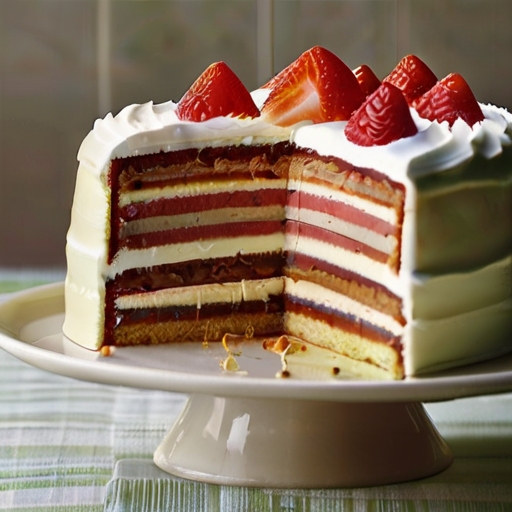
- A chocolate lover’s delight: replace the traditional vanilla layer with a chocolate he cake layer. Add chocolate ganache between layers and cover with chocolate buttercream frosting. Sprinkle chocolate shavings or cocoa powder on top for garnish.
- Berry Burst: Alternating layers of vanilla cake with layers of mixed berry compote or jam. Use a light whipped cream frosting between the layers and garnish the top with fresh berries.
- Citrus Zest: Add lemon, orange, or lime zest to cake layers for a refreshing touch. Fill the layer with citrus curd and brush with spicy citrus buttercream. Garnish with candied citrus peel or fresh citrus slices.
- Coconut Dream: Add shredded coconut to the cake batter for a tropical flavor. Fill the layer with coconut cream or coconut cream and top with coconut-flavored buttercream. Roasted coconut flakes make a great garnish.
- Red Velvet Romance: Replace some of the vanilla cake layers with red velvet cake for a striking visual effect. Use cream cheese frosting between the layers and spread the cake with smooth cream cheese frosting. Decorate with red velvet cake crumbs or red sprinkles.
- Nutty indulgence: Mix chopped nuts like almonds, pecans, and walnuts into the cake batter. Fill the layers with rich nut buttercream or Nutella and top with nut-flavored frosting. Garnish with roasted nuts for an extra crunch.
- Seasonal Surprise: Make your cake seasonal by adding seasonal fruits and flavors. For example, in the fall, layer apple or pumpkin spice cake with cinnamon cream cheese frosting. In summer, choose layers of lemon cake with raspberry filling and light whipped cream frosting.
The traditional Seven-layer cake recipe stands out for several reasons.
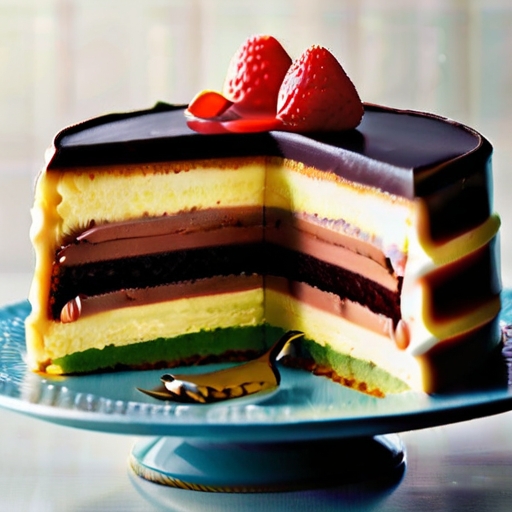
- Classic Charm: The Seven-Layer Cake recipe has a timeless appeal that appeals to many. It evokes a sense of nostalgia and tradition and is popular for festivals and special occasions.
- Impressive Presentation: A 7-layer cake with multiple layers stacked high is visually impressive. It will be the centerpiece of any gathering and impress your guests with its elegant appearance.
- Different Flavors: Each layer of the cake can incorporate different flavors, including different cake batters, fillings, and icings. This versatility allows for creativity in flavor combinations and allows you to cover a wide range of flavors.
- Textural Contrast: The layers of cake, filling, and frosting create fun contrasts in texture, from soft, moist cake to creamy filling and smooth frosting. This interplay of textures adds depth and complexity to each bite.
- Customization Options: The basic concept of the 7 Layer Cake Recipe can be easily customized. Bakers can experiment with different flavor combinations, decorations, and improvements, depending on their tastes and the theme of the day.
- Results: Baking a 7-layer cake from scratch requires skill and patience, but it’s a worthwhile baking project. Successfully assembling and decorating such a cake gives the baker a sense of accomplishment and pride.
- Intergenerational Connections: Many families cherish seven-layer cake recipes that have been passed down through generations. Baking and eating these cakes brings back memories of family gatherings and makes you feel connected to the past.
Vegan and gluten-free version of the traditional Seven-layer cake:
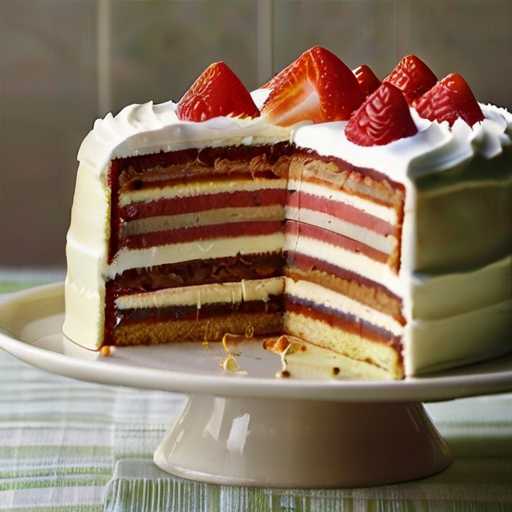
- Ingredients:
- For the cake layers:
- 2 cups gluten-free all-purpose flour
- 1 cup almonds
- coconut flour 1 1/2 cups
- unsweetened cocoa Powder 1/2 cup Elopen Baking Powder
- Baking powder 1 tsp
- Salt 1/2 tsp
- Almond milk 1 3/4 cups (or other vegetable milk)
- Vegetable oil 1/2 cup
- 2 tsp Vanilla extract
- Tbsp 2 tablespoons apple cider vinegar
- For the Frosting:
- 2 ripe avocados
- 1/2 cup cocoa powder
- 1/2 cup maple syrup
- 2 teaspoon vanilla extract
- Pinch of salt
- For the cake layers:
- Instructions:
- Preheat oven to 350°F (175°C) Preheat to. Grease and line seven 9-inch round cake pans with parchment paper.
- In a large mixing bowl, combine gluten-free all-purpose flour, almond flour, coconut flour, cocoa powder, baking powder, baking soda, and salt until well combined.
- Almond milk, vegetable oil, apple cider vinegar, and vanilla essence should all be combined smoothly in a different basin.
- Gradually pour the wet ingredients into the dry ingredients and stir until just combined and there are no lumps.
- Divide the batter evenly between the prepared cake pans and spread into even layers.
- Bake in the preheated oven for 15 to 20 minutes, or until a toothpick inserted into the center of the cake comes out clean.
- Remove the cake from the oven and let it cool in the tin for 10 minutes, then transfer to a wire rack to cool completely.
- While the cake is cooling, prepare the icing. Ripe avocado, cocoa powder, maple syrup, vanilla essence, and a dash of salt should all be combined in a food processor or blender. Puree until smooth and creamy, scraping down sides as needed.
- Once the cake has cooled completely, he assembles the seven-layer cake by applying generous amounts of frosting between each layer.
- After all layers are added, use the remaining frosting to coat the top and sides of the cake.
- Decorate the cake with vegan chocolate chips, chopped nuts, or coconut flakes as desired.
- Chill the cake in the refrigerator for at least 1 hour before serving to allow the icing to harden.
Traditional Seven Layer Cake Recipe Notes:

- Historical Significance: The traditional seven layer cake has deep roots in American baking history. It is thought to have originated in the American South, especially among German immigrants who brought their baking traditions with them. Over time, it has become a staple dessert for special occasions and celebrations.
- Cultural Significance: In many families, seven-layer cakes have important cultural significance and are often passed down through generations as treasured recipes. Often enjoyed at holidays, birthdays, and other celebratory gatherings, it symbolizes warmth, love, and tradition.
- Layering Technique: One of the important aspects of this cake is the layering technique. Each layer is typically thin and delicate, requiring precision and patience to achieve the perfect thickness. Some bakers prefer to bake each layer individually, while others choose to prepare only one large cake and then cut it into multiple layers.
- Variations: The traditional seven-layer cake usually consists of layers of chocolate cake with frosting in between, but there are countless variations and modifications to suit different tastes and preferences. Some recipes include different flavors of cake and frosting, while others add fillings such as fruit jam or whipped cream.
- Assembly Tip: Assembling a 7-layer cake can be a little difficult due to its height and complexity. It is important to wait until the cake layers are completely cool before frosting to avoid them falling apart. A cake turntable makes it easier to apply frosting evenly between layers and smooths the outside surface.
- Storage and Serving: Due to the multiple layers and frosting, the traditional 7-layer cake is best stored in the refrigerator. However, it is important to bring it to room temperature before serving to ensure the best texture and flavor. Garnishing with chocolate shavings, sprinkles, or fresh fruit will add an even more elegant touch to the presentation.
- Personal Information: Many bakers have their own variations on the traditional He Seven Layer Cake recipe, such as adding secret ingredients to the cake batter or experimenting with different frosting flavors.
Frequently Asked Questions (FAQ): Traditional Seven-Layer Cake Recipe:
- 1. What traditional layers does a Seven-layer cake consist of?
- • A traditional seven-layer cake usually consists of alternating layers of moist cake and creamy frosting. Common flavors include chocolate, vanilla, and sometimes layers of fruit or nuts.
- 2. Can I customize the flavors of each layer of the 7-layer cake?
- • Yes, you can customize the flavors to your liking. You can experiment with different cake flavors like chocolate, vanilla, strawberry, and almond, and pair them with complementary frosting flavors like buttercream, cream cheese, and ganache.
- 3. How can I make sure each layer bakes evenly and is the same size?
- • To ensure a uniform consistency, measure and evenly distribute the batter into the cake pans. That is important. You can also rotate the pan halfway through the baking time to ensure even cooking in the oven. Cake strips or baking bands can be used to prevent puffiness and help level out the layers.
- 4. What type of frosting is best for a Seven-layer cake?
- • The type of frosting depends on personal preference and the flavor of the cake layers. Buttercream frosting is a popular choice due to its versatility and stability, but cream cheese frosting, ganache, or whipped cream are also delicious options.
- 5. Can I make a 7-layer cake in advance?
- • Yes, you can make a 7-layer cake in advance. The baked cake layers can be wrapped tightly in plastic wrap and refrigerated for up to 2 days before assembling the cake. The assembled cake can be stored in the refrigerator for up to 3 days. For the best flavor and texture, make sure the cake is at room temperature before serving.
In summary, the traditional 7 layer cake recipe provides a delicious treat for any occasion. It starts with a moist, aromatic sponge cake base, followed by layers of rich, creamy icing, usually alternating with chocolate and vanilla. It is a dessert perfect for celebrations, with a careful composition and an impressive appearance. With its nostalgic charm and irresistible flavor, this classic recipe remains a favorite among bakers and dessert lovers alike, promising a touch of sweetness in every bite.

